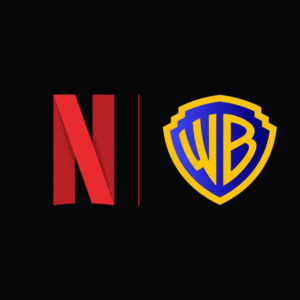How Developers Use Redeem Codes for App Promotions
Redeem codes are a powerful tool in mobile app marketing. This guide explains how developers design codes, allocate promotions, track results, and optimize campaigns to grow reach and revenue without heavy ad spend.

Developers create targeted redeem code campaigns to spark downloads and re-engage existing users. Freepik
When you see creators or tech reviewers handing out Google Play redeem codes, they didn’t find those codes under a rainbow. Developers make them inside the Google Play Console, Google’s official dashboard for publishing Android apps. These codes are one of the simplest marketing tools to attract users, reward loyal players, and even test premium app features before launch.
What Are Google Play Redeem Codes?
Redeem codes are unique alphanumeric keys that unlock paid content for free. A developer can create them directly from the Play Console to share an app, in-app product, or subscription without payment.
For example, a code like K4JF3Y9W8M2ZL5AB can unlock:
- A paid app download
- Premium in-app features (like removing ads)
- Game currency or skins
- Trial access to a subscription
You can enter the code in the Play Store under Profile → Payments & subscriptions → Redeem code to apply it.

Why Developers Use Redeem Codes
Developers use redeem codes as part of app growth and promotion. “The reason is quite clear” — people love free stuff, and free stuff gets attention.
Here are the main purposes:
1. App Testing Before Release
When an app is still under development, developers send redeem codes to a small group of testers or QA engineers. They redeem the code to access premium parts of the app that aren’t publicly available yet.
This saves developers from publishing half-baked beta versions on the store.
2. Influencer Collaborations
Gaming and utility apps give redeem codes to YouTubers, streamers, or bloggers. These influencers use the codes to try the app and share honest reviews.
You might’ve seen a creator saying, “Use this code to get free coins or unlock premium filters.” That’s exactly what these codes are made for.
3. Giveaways and Contests
Many apps host events on Telegram or Instagram, promising a few redeem codes to random participants. It creates buzz and brings organic installs without running paid ads.
Small indie developers rely on this method since it builds community at zero marketing cost.
4. Customer Rewards and Loyalty Programs
Developers also distribute codes to old users as loyalty gifts. When a game updates with new maps or modes, the studio sends a redeem code by email or in-app message to thank users for staying.
5. Partnerships and Sponsorships
Big apps collaborate with brands or reward platforms (like FreeGiftZone) to distribute redeem codes during campaigns. These tie-ups push traffic from one platform to another, creating win-win visibility.
How Developers Create Codes in Google Play Console
You can try this first — open your Play Console, and on the left sidebar, you’ll find Monetize → Promotions → Create Promotion.
From here, a developer can:
- Select the app or product they want to promote.
- Choose type of promotion: app, in-app product, or subscription.
- Decide number of codes (up to 500,000 per quarter).
- Set start and end date for the campaign.
- Download all codes as a CSV file for distribution.
Each code in that file is unique, like a key that opens a single door once. Once used, it expires automatically.
Important: Only published apps with paid items are eligible for code creation. Free-only apps can’t generate redeem codes.
Code Distribution Methods
Developers share these codes in different ways depending on their target users:
| Method | Use Case | Example |
| Email or Newsletter | Loyal users or subscribers | Send festive or update-related codes |
| YouTube or Livestream | Gaming audience | “Redeem this code for 50 free coins” |
| Discord or Telegram | Community engagement | Limited drops or event rewards |
| Social Media | Contest winners | DM-based code delivery |
| Partner Sites | Marketing tie-ups | FreeGiftZone, GiveIndia, or reward portals |
Sometimes, developers also hand out codes through press kits to tech journalists or reviewers before launch.
Redeem Code Limitations
The point is simple here: Google doesn’t want these codes to become black-market currency. That’s why there are a few built-in limits.
Quantity Restriction
- Maximum 500,000 codes per app per quarter.
- Minimum 1,000 codes per batch.
Expiry Duration
- Valid only within the campaign’s start and end date.
- After expiry, users can’t redeem them, even if unused.
No Cash Value
- Redeem codes can’t be exchanged for money or transferred between accounts.
Single-Use Only
- Each code works once. If shared publicly and one person uses it, the rest will see “Code already redeemed.”
Region Lock
- Codes are valid only in the countries where the app is distributed.
- No Auto-Renewal for Subscriptions
- If the code unlocks a one-month premium plan, it won’t renew automatically unless the user pays later.
How the Expiry System Works
When that is done, every promotion in Play Console comes with a fixed validity. Developers can choose start and end dates, for example, a two-month campaign during the festive season.
Once the end date passes:
- Unused codes automatically expire.
- Used codes remain valid for whatever they unlocked (like an app license or premium coins).
- The developer can’t extend or reuse the same batch.
This expiry control prevents spam and limits fraud in case leaked codes appear on random websites.
Common Developer Mistakes with Redeem Codes
- Creating codes before the app update goes live (users can’t redeem them yet).
- Forgetting to check region distribution.
- Sending the same code to multiple influencers.
- Not tracking redemption data.
- Using expired campaign links during promotions.
Developers can view redemption stats inside Play Console under Monetize → Promotions → Reports. It shows how many codes were redeemed, and where.
Why Redeem Codes Matter for Marketing
Redeem codes are marketing gold for indie developers. They cost nothing but can generate high engagement. A small app giving 100 free premium codes to micro-influencers can reach thousands of potential users without paying for ads.
That’s why companies like Swagbucks, PrizeRebel, Freegiftzone work with apps to distribute such free redeem codes for Google Play Store safely through verified systems. It reduces fraud and connects real users to real apps.
Final Thoughts
So next time you see someone dropping a Google Play redeem code, remember — it’s not random luck. It’s a planned promotion, designed by developers to test, reward, or grow their audience.
If you build apps, start using the redeem code feature in the Play Console. It’s free, legal, and far more effective than shouting into the void with paid ads.
At the end of the day, a single redeem code can do what a full marketing campaign sometimes can’t make a user actually care about your app.
Quick Checklist for Developers
- Publish your app on Play Store before generating codes
- Go to Play Console → Monetize → Promotions
- Set correct region and expiry date
- Keep codes in a secure CSV file
- Distribute only to trusted sources
- Track redemption performance in Play Console






